Starting Your Vegetable Garden From Seeds {How To}
Back in the day (when is that exactly?) people didn’t start their gardens by visiting the local big box store and buying little plant starts already hardened off and of a good size to put inter raised beds. They started their gardens from seeds that either they had saved or ones that had been shared from neighbors and friends.
I like to start several of my gardening plants from seeds. For hot weather plants like tomatoes and green peppers I usually start my vegetable seeds indoors during late winter like February.
I don’t know when I started using seeds for most of my summer vegetable garden but it’s a good way to get a head start on your garden. And once you make your initial investment you can save quite a bit rather than buying seedlings.
I start some seeds indoors and I also plant some seeds directly in the garden.
Benefits of starting Your Summer Garden with Seeds
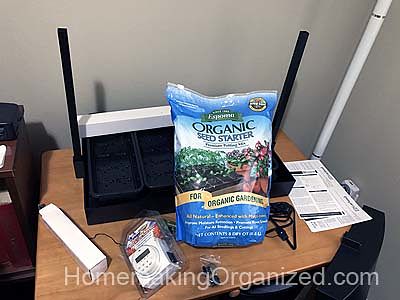
- A Head Start on Summer Gardening. After a few months of winter we are all ready to get some reminders that Spring will come. Flipping through your garden catalogues and ordering your seeds is such a nice activity. There are so many seed catalogues. I made you a small list…
- Territorial Seeds
- Annie’s Heirloom Seeds
- Baker Creek Heirloom Seeds
- Dixondale Farms (this is where I get my onion sets)
- Harris Seeds
The Productive Garden: How to Make the Most of Whatever Space You Have
Friday April 9th
- Extend that Harvest! When you start with seeds you can stagger your plantings so that you can extend your harvest. This is called succession planting. One after the other. I’m still working on actually doing it successfully. I tried it a bit with lettuce last year. Things I would want to extend are things like lettuces, greens, carrots, and radishes. Still unsure what I’m talking about? Check out this article => Succession Planting for a Longer Harvest
- Save money on plants. When you start from seed you get more plants for your money. One plant can cost as much as a whole packet of seeds.
- Easier to grow for a cut and come again garden. This for things like lettuce. When you plant them by seed you can plant them closer together and then harvest by cutting what you need and it grows back. I’m probably explaining it wrong so here’s a video example…
Tips for Starting Seeds Indoors
So how do you go about starting your plants from seeds? Is it just a matter of pushing some seeds in dirt?
Some seeds need to started indoors. Especially your warm weather plants like tomatoes. They need a little extra love to get a good start. To figure out how care for each type of plant you want grow get a good planting calendar that tells you when is the best time to start your seeds.
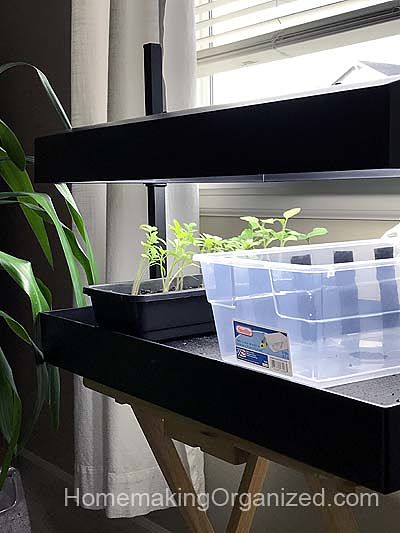
These are the things you need to look for…
- Find a Good Location: When setting out your seeds indoors try to find a flat surface, such as a table that is about waist-high. I tend to use desks near a window or even a lower dresser top.
- Lighting is Very Important: A window with some indirect sunlight is good, or you can use a grow lamp or light(more on that later). When starting those delicate seedlings I’ve found a grow light to be best. Your little plants will need 8 to 12 hours of sunlight per day. I have southern facing windows but getting enough light on growing plants can be tricky. I’ve also had success with rigged up foil backdrops to reflect light. But be careful not to let it burn your plants. Right now I have our seeds in under a grow light in an upstairs bedroom. This is the grow light system I’m using now. I had bad experiences with another brand but so far this has been working very well.
- Water: Keeping your plants well hydrated is also essential. Be sure to have
- Count back from the last day of frost to know when to start your seeds.
- Use a grow light and timer in a nice warm area to give your seedlings the required lighting they need.
- Check Transplant Times for when to plant your starts outside.
- Harden Off your plants to acclimate them to the out of doors.
- Keep watch on your little seedlings even after planting them in your garden beds. They are still fragile and need some tender loving care to grow nice and strong. Use things like row covers and garden cloches to protect your plants.
- Containers: Seeds can be started in almost any container. But containers that have drainage holes and provide at least two inches of soil are best. You can recycle used produce containers, such as plastic strawberry and lettuce “clamshell” packages. Some people even use the cardboard egg containers.Peat pots are another option and these make things easier because the peat composts into the soil, so when you transplant, you place the whole pot into your garden bed. Also the roots remain undisturbed when you use peat pots.You don’t have to have separate containers for each seed or seedling. You can use an open flat and then gently tease seedlings out and apart when it’s time to thin them or transplant. But most people believe that separate containers require less root disturbance when transplanting the seedlings.
- The next step is your soil. At most any gardening center you can find a potting mix formulated just for starting seeds. That’s what I get. I use different brands all the time and this is the seed starting mix I used this year.
Planting Your Seeds
Water Your Soil
Before planting your seeds, water the soil in the containers thoroughly. Make sure the soil is soaked through but not mud. This is important – if you plant in dry soil and then attempt to water, your seeds will get dislodged and may float away over the rim of the pot!
Plant the Seeds
Most seed packets have directions on how deep to plant the seeds and how many to plant at once. Make sure to read these! The directions will tell you how many seeds to plant at once, and how much soil to put over them.
Starting Seeds Outdoors
There are plenty of seeds you can plant direct outdoors. Here are some I plant right in the prepared garden beds.
- radishes
- peas
- lettuce
- beans
- squash
- swiss chard
I find planting with seeds is more rewarding than getting starts. Hopefully these tips will help you get started on your summer garden.
Be sure and pick up some Printable Vintage Seed Packets in our Free Printables section.

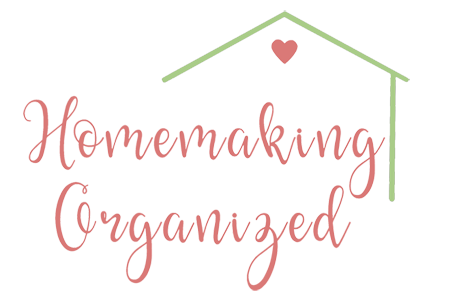
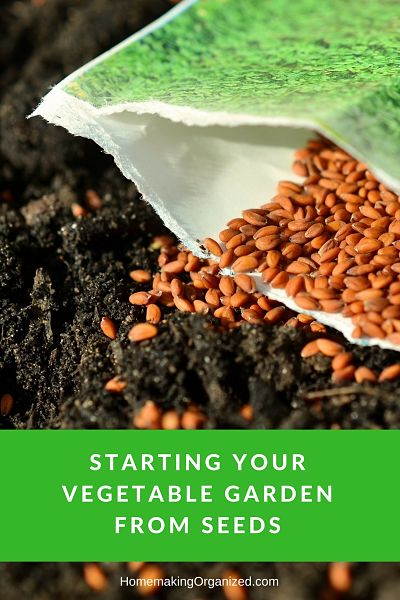
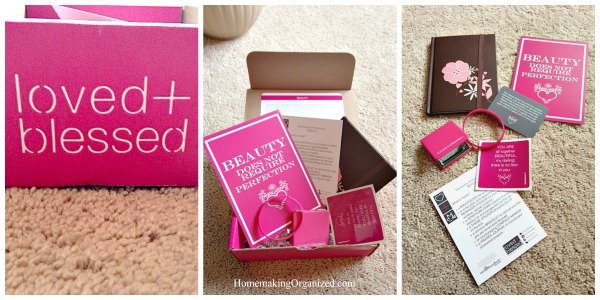



Hi Kemi,
I tried growing some pepper plants a few years back. They actually grew quite large in pots but all of a sudden started to die even though I made sure they were watered etc.
Although I did plant a few outside (the weather was hot, I think they like that) from another batch and we actually got some nice sized peppers so it isn’t all bad. Your post has some great information in it, I can tell you have got quite a lot of experience and I’m going to make sure I follow your suggestions, wish me luck!
Hi Daniel. Yes peppers, like tomatoes, need lots of sun. My dad grows really hot peppers in his yard. It’s one of his main crops (and delights to eat).
Thank you for the compliment 🙂 I’m still learning though. Every year it’s something new.